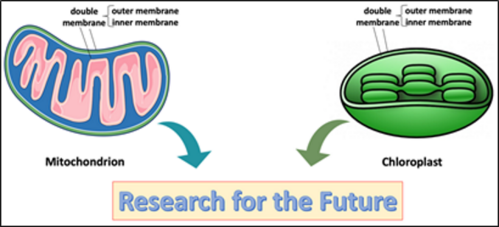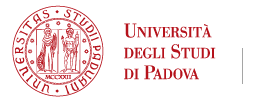
SPOTLIGHT: Bioenergetic organelles: more than just powerhouse @Bioenergetic organelles Unit
Pubblicato il: 20.01.2020 09:57
The Bioenergetic organelles Unit studies the biology of mitochondria and chloroplasts, the key organelles in energy homeostasis. The ongoing research carried out by the 9 research groups with complementary expertise that form the Unit can be summarized in three themes: the study of bioenergetics, how energy flows through living systems; of interorganelle interactions, how other organelles interact with mitochondria; of mitochondria-related diseases, how genetic and sporadic disorders like cancer, neurodegeneration and diabetes are caused or amplified by mitochondrial damage. The Unit’s mission is to provide a better understanding of physiology and pathophysiology of these organelles and to elucidate their contribution to signaling cascades.
In addition of providing most of the ATP, mitochondria are the metabolic hubs where a plethora of intermediary metabolism reactions take place. Moreover, mitochondria participate in signaling cascades that use them as platforms and amplifiers. Indeed, mitochondria are essential for cell death, differentiation, autophagy and innate immunity. Not surprisingly, the functional complexity of these organelles is matched by their highly dynamic natures. The varied mitochondrial shape results from the equilibrium between fusion and fission processes and by the interaction with other organelles. All these processes, collectively termed “mitochondrial dynamics” impact on mitochondrial function and in turn, on the participation of mitochondria in signaling and disease. The Scorrano Lab pioneered the study of mitochondrial dynamics and contact sites with other organelles. By integrating genetics, imaging, physiology, biochemistry, metabolism and omics approaches the Scorrano Lab exploits mitochondrial dynamics and interorganellar contact sites to understand the morphology-function relationship of these organelles and its importance in mitochondrial, cellular and organismal biology, as well as in disease. The Giacomello Lab investigates the molecular mechanisms of mitochondrial interactions with other organelles in physiology and pathology, by means of high content imaging approaches and genetically encoded fluorescent proteins. The Soriano Lab is interested in the study of the molecular mechanisms regulating mtDNA stability and segregation during mitochondrial division and cristae remodeling. The alteration of these processes leads to mtDNA depletion or deletions and the onset of mitochondrial diseases mainly characterized by neurological phenotypes.
Neurological disorders are also the common topic of the Ziviani, Brini and Costantini laboratories. Ziviani Lab is interested in mitochondrial biology of Parkinson’s Disease with a focus on post-translational modification of mitochondria and the mechanisms of mitochondrial quality control. The lab’s recent works gave unprecedented insight into the regulatory role of deubiquitinating enzymes Usp8 and Usp14 in mitochondrial physiology, and the potential therapeutic implications of these DUBs as targets. The research team pioneered the use of patient-derived iPSCs for use in mitochondrial biology, and the assessment of beneficial effects of compounds, including small-molecule inhibitors of DUBs. The Ziviani Lab has developed assays to measure mitophagy in neurons, and in vivo in flies, functional analysis of mitochondrial activity, shape, and ultrastructure, and in vivo genetic interaction approaches to dissect molecular pathways that are important in neuronal demise. In the same context, the Brini Lab’s research activity is mainly focused on calcium signaling, mitochondria biology and their crosstalk in cell physiology and pathophysiology. A special attention is devoted to the action of Parkinson’s disease-related proteins (alpha-synuclein, PINK1, Parkin and DJ-1) on mitochondrial calcium handling and the relationship between the endoplasmic reticulum and mitochondria. Recently, Brini lab has shown that alpha-synuclein, Parkin and DJ-1 have important role in sustaining energetic metabolism by modulating ER-mitochondria tethering and favouring mitochondrial calcium uptake upon cell stimulation, implying that their loss of function directly impinges on cell bioenergetics. ER-mitochondria and Plasma membrane-ER (as well as other inter-organellar) contacts are currently explored in a variety of cell models and in vivo by developing new molecular targeted tools based on the splitGFP approach and BiFC (bimolecular fluorescence complementation). The work of the Costantini group is focused on Friedreich ataxia (FRDA), a neurodegenerative disease caused by the depletion of the mitochondrial iron-binding protein frataxin. The cardinal downstream feature of FRDA patients’ cells is a severely affected mitochondrial phenotype, associated with a deficit of FeS-proteins, impairment of energy production, iron overload and increased sensitivity to oxidative stress. The precise role of frataxin in the mitochondrial physiology and its involvement in FRDA onset and progression remain unclear. Indeed, there are currently no options to prevent or treat the disease. In the Costantini Lab two parallel and related projects are currently under way: 1) an advanced spectroscopic analysis of recombinant wild type frataxin and clinically relevant variants, to explore the role of the protein in iron-binding/storage and in FeS-clusters assembly; 2) a thorough study of the mitochondrial phenotype of FRDA patient cells, with a particular focus on morpho-dynamics and iron metabolism, to disclose the upstream consequences of frataxin depletion, with the long term goal to identify novel molecular targets for specific therapeutic approaches.
A further main topic among the research projects in the Unit is the study of how mitochondrial (dys)function and its regulation in cancer can be exploited for the selective elimination of cancer cells within a heterogeneous cell population in a tumor. In particular, the Szabò Lab focuses on chemical targeting of different ion channels in the mitochondrial inner membrane in order to trigger apoptosis and to selectively kill pathological cells in difficult-to treat cancers such as melanoma, leukemia and pancreatic ductal adenocarcinoma. In vivo experiments in mouse models led to the identification of very promising candidate molecules that are able to substantially decrease tumor progression without causing side effects to healthy tissues. Targeting of a mitochondrial potassium channel might be a promising strategy also in the context of multiple sclerosis, another focus in the Szabò Lab. While, Leanza Lab is focused on dissecting the role of mitochondrial metabolism in tuning intracellular cell signaling in diseases. Indeed, recent discoveries have revealed that when mitochondrial ATP synthesis is impaired, Wnt (Wingless-related integration site) signaling is down-regulated both in cancer cells as well as in cells from patients affected by mitochondrial syndromes. The modulation of mitochondrial metabolism and in turn of ATP synthesis will be now of interest in Leanza Lab to finally block cancer progression.
As to chloroplasts, similarly to the mammalian organelle, the existence of ion-conducting pathways has recently been demonstrated. The Szabò Lab pioneered the study of the regulation of photosynthesis by ion channels such as potassium and calcium-selective channels and is currently focusing on the elucidation of chloroplast ion channel-linked molecular mechanisms and signal transduction pathways involved in various plant stress responses.
Recently, the research Unit acquired a new member, Dr. Pontarin, who started a new research line, namely the investigation of the inflammatory role of mitochondria in endothelial senescent cells and its impact on the surrounding cellular microenvironment. Cellular senescence prevents the proliferation of cells exposed to potentially oncogenic stresses and changes the microenvironment by the secretion of bioactive molecules. Emerging evidences have pinpointed mitochondria as one of the key modulators of senescent phenotype. The aim of this project is to investigate whether and to what extent mitochondria of senescent cells may be a source of damage-associated molecular patterns (DAMPs) which are identified by cellular innate immune system and engage a number of inflammatory pathways.
Faculties in the Bioenergetic organelles Unit:
Full Professors: Luca Scorrano, Ildikò Szabò.
Associate Professors: Marisa Brini, Paola Costantini, Luigi Leanza, Elena Ziviani.
Assistant Professors: Marta Giacomello, Giovanna Pontarin, Maria Eugenia Soriano.
If you would like to know more, you can find some of the groups of the Unit at:
https://www.vimm.it/scientific-board/luca-scorrano/
Follow us on twitter:
https://twitter.com/Szabolab_UniPD?s=20





